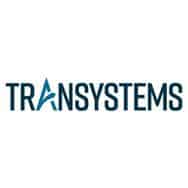Ever looked at a city’s skyline and wondered what stories those structures could tell? How they’ve withstood the tests of time, weather, and now, the pressing demands of sustainability? Well, I sure have. On a brisk morning walk through downtown, amidst these towering figures, it dawned on me: why not dress the old in new, sustainable tech? And that’s exactly what retrofitting is all about. Let me dive into the green revival of our urban titans.
The Heart of Retrofitting
Retrofitting isn’t just about slapping solar panels onto rooftops (though, hey, that’s a start). It’s a comprehensive revamp of existing structures to make them more energy-efficient and less harmful to our planet. And, it’s not just an environmental imperative — it’s an economic and social one too.
- Energy Efficiency: Updating HVAC systems, switching to LED lighting, and improving insulation.
- Water Conservation: Putting rainwater harvesting systems and efficient plumbing fixtures in place.
An example that sticks out is the Empire State Building. This icon underwent a retrofit that cut its energy use by 38%. Yep, the old dog learned new Green tricks!
Tech That’s Making It Happen
- Smart Glass: Imagine windows that adjust their tint based on sunlight, reducing the need for heating and air conditioning. Magic? Nope, just smart engineering.
- Building Automation Systems: These are the brains of the operation, monitoring, and optimizing energy use in real-time.
- Insulation Upgrades: Innovative solutions like spray foam or aerogel insulations drastically reduce heat loss and gain, making buildings much more energy-efficient.
- Solar Panels: Rooftop solar panels, particularly in sun-rich regions, can be a game-changer, considerably reducing reliance on fossil fuels for electricity generation.
- Energy Recovery Ventilators: These systems capture and reuse energy from exhaust air, ensuring a much more efficient heating and cooling process.
- LED Lighting: LEDs consume significantly less energy than traditional bulbs and last much longer, offering both energy and cost savings.
- Low-flow Water Fixtures: These fixtures can reduce water usage by over 50%, adding a touch of green to both wet and dry areas.
- Smart Metering: Smart energy and water meters provide accurate, real-time usage data, helping monitor and control resource consumption.
- Energy-Efficient Appliances: From high-efficiency boilers to Energy Star appliances, every bit of technology we use in buildings can contribute toward the goal of sustainability.
- Graywater Recycling Systems: By recycling water from sinks, showers, and laundry for use in toilets and irrigation, these systems can drastically cut down on water usage.
- Sustainable Packaging Solutions: Incorporating eco-friendly materials such as block-and-brace foam during transportation serves as a proactive measure to shield materials from damage. This not only eliminates the need for costly replacements but also reduces waste generated during construction.
- Wall Mirrors: Integrating wall mirrors into building design can enhance natural lighting, reducing the need for artificial light and further decreasing energy consumption. Mirrors also create the illusion of more space, making interiors appear larger and more open.
This tech is paving the way, making it easier for structures to breathe new, eco-friendly life.
The Buck Stops Here … Or Does It?
When we consider retrofitting’s grand scheme, cost emerges as the primary deterrent. No doubt, the initial investment often triggers furrowed brows in budget meetings. However, the financial narrative changes dramatically when we consider the long-term implications.
- Energy Cost Savings: Retrofitting renders buildings substantially more energy-efficient, resulting in conspicuous reductions in utility bills. These savings, accrued over time, can offset the original investment cost by a considerable margin.
- Property Value Enhancement: Saving the planet can be good for property value too! Buildings boasting eco-friendly upgrades often see a considerable increase in their market worth thanks to the rising consumer demand for sustainable spaces.
- Incentives and Subsidies: From tax credits to green energy grants, governments worldwide are incentivizing sustainable building practices, making retrofitting even more financially attractive.
So, while retrofitting may appear like a substantial expenditure at first glance, it’s a viable, long-term investment that brings both environmental and economic dividends. It’s an investment in our cities’ future, one that’s too sweet to ignore.
The Social Dimension
[su_spacer]
Community Engagement & Education
Engaging the local community and educating them on the benefits of sustainable retrofitting not only garners support but also cultivates a culture of sustainability. Through workshops and open houses, residents become advocates for greener buildings.
Preserving Cultural Heritage
In our quest for sustainability, we’re not just saving energy, we’re also preserving history. Retrofitting allows us to breathe new life into buildings with historical significance, maintaining a city’s character and charm. It’s a delicate balancing act between modernization and preservation.
Looking Forward
[su_spacer]
Innovations on the Horizon
The field is ripe with innovation. Think photovoltaic glass that not only self-tints but also generates power, or biophilic design principles that integrate nature into buildings, promoting both energy efficiency and well-being.
The Role of Policy
Policy can be a powerful catalyst for change. By incentivizing retrofitting through tax breaks, grants, and expedited permits, governments can accelerate the adoption of sustainable practices.
Key Takeaway
Sustaining our skyline through retrofitting is more than a noble cause — it’s a feasible, imperative move toward preserving our urban jungles. Let’s wield our technical prowess, our creative minds, and our relentless drive to engineer a greener, more sustainable world, one retrofit at a time. Because, at the end of the day, we’re not just building for today — we’re engineering for tomorrow.
Let’s remember: retrofitting is not just an engineering challenge; it’s our chance to leave a lasting imprint on our cities. Let’s make it count!
Whether you’re brainstorming your next big project or eyeing that dated building downtown, remember: the future of our cities lies not just in the new structures we erect but in how respectfully and innovatively we treat the old ones.
Let’s get out there and sustain that skyline!
 About the Author: Cris Mark Baroro
About the Author: Cris Mark Baroro
Cris is currently working in VEED.io as a search engine optimization specialist. He is a tech enthusiast who loves capturing photos and videos. He loves technology and can do video editing, programming, QA system testing, and writing.
We would love to hear any questions you might have or stories you might share on retrofitting existing structures for sustainability.
Please leave your comments, feedback or questions in the section below.













